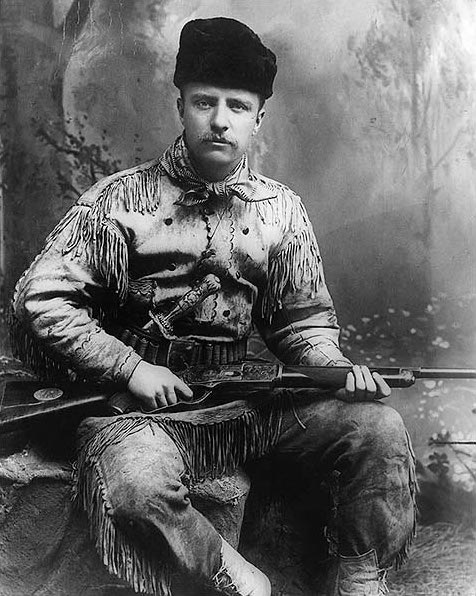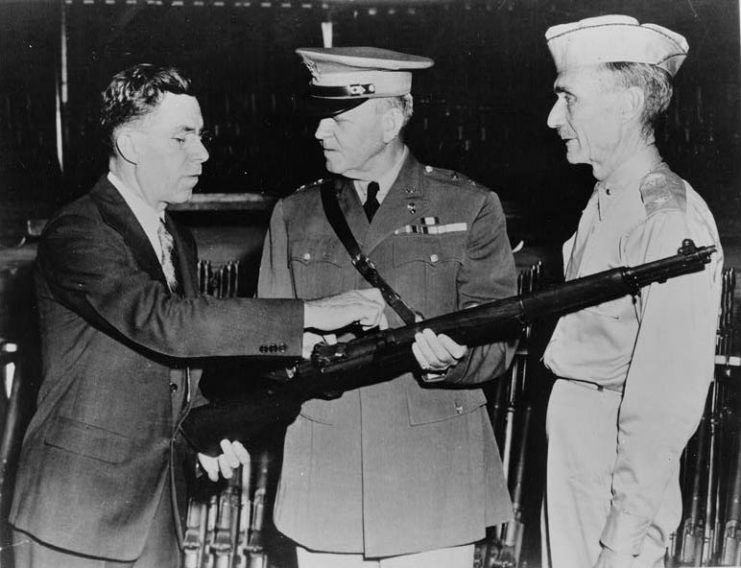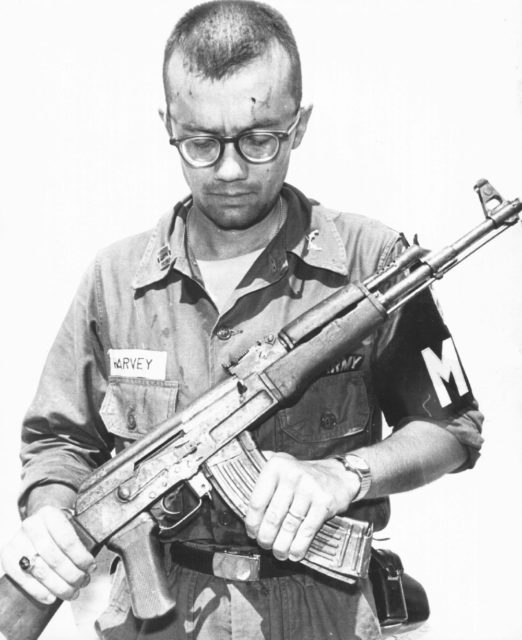The Dreyse Needle Gun
The great needle gun was the first bolt-action breech-loading rifle in history. It gave the Prussian army a huge advantage during a series of wars from the mid-1860s to 1871, during which they united the many small provinces of Germany against external threats. The gun’s name came from its firing mechanism, in which a needle was driven into a percussion cap in the cartridge.
The Prussians worked hard to keep the mechanisms and performance of their weapon a secret, keeping their edge for years.
The Winchester Repeater
Tyler Henry’s Winchester repeating rifle was not the first repeater to be invented. That was designed by the 20-year-old Christopher Spencer in 1860 and patented only months before the Winchester. The Winchester took longer to load than the Spencer, but it had advantages in other ways. Due to its 12-round magazine, a man equipped with a Winchester could fire up to 25 rounds in a minute.
The Winchester’s innovative toggle-lock mechanism opened the chamber, loaded a bullet, drew the hammer, and locked it in place with a single movement. It led to the widespread adoption of repeater weapons.
The triumph of the Winchester over the Spencer had less to do with technology than with sharp business practices. Oliver Winchester bought out the Spencer company after the American Civil War and sold off the left-over Spencer repeaters, leaving his weapon without competitors.

Colt Model 1873
Samuel Colt was the man who perfected revolver technology. Building on earlier ideas, he combined a cylindrical six-round chamber with percussion firing and modern engineering to create the modern revolver. His mechanism used a ratchet in the rear of the cylinder to rotate it every time the hammer was cocked, automatically moving a fresh round into the firing position.
Colt’s early models gave a huge edge to the men wielding them. But the arrival of the metal cartridge gave his technology a whole new lease of life. Together with a hinge-gate mechanism behind the chamber, it allowed the revolver to be loaded faster than ever before.
The most famous result was the Colt Model 1873, known as the Peacemaker. An icon of the American West, it has starred in more westerns than John Wayne, and Clint Eastwood combined.
Lee-Metfield Magazine Rifle
During the 1880s, the British army investigated different options that could give them a superior weapon to their opponents. After looking at designs from many different manufacturers, they settled on a Lee action and Metford-rifled barrel, creating the first box-magazine military rifle. The design traveled the world, as British troops fought to control their scattered colonies.
Luger
Officially known as the German Pistole 08, it is better known by the name of its designer, Georg Luger.
At the end of the 19th century, Luger worked for Ludwig Lowe while making the European production version of Hugo Borchardt’s ground-breaking semi-automatic pistol. While streamlining the clumsy American gun, Luger saw that a complete redesign would be better. The result was the Pistole 08.
Several features made the Luger a success and an enduring feature of 20th-century warfare. Its shape meant that it acted as a natural extension of the firer’s arm and hand, for easy aim. It was robust and reliable, able to withstand the knocks of service in the field. Its inline magazine and toggle mechanism allowed it to be quickly and instinctively reloaded and ready for action. A larger “snail” magazine could be used to increase its capacity.
M1 Rifle
Adopted by the American military in 1932, the 0.3-inch Rifle M1 was the first in a long series of American semi-automatic weapons. It was excellent but expensive, a reflection of America’s commitment to self-loading weapons.
The clip-fed magazine held only eight rounds and was noisy when ejecting a clip. It was a good, reliable gun that served the US well into the 1960s.

Sturmgewehr 44
Abbreviated to the StG44, it was the first widely used weapon that could alternate between single shot and fully automatic fire – the predecessor of modern assault rifles. Introduced by the German military in 1944, it provided either accurate long-range single-shot fire or deadly close-range bursts.
Hitler initially objected to the idea of assault rifles, but when he heard about the StG44’s effectiveness in combat, he changed his mind. German troops changed tactics to make use of the new weapon, which saved them from the need for slower-moving machine-gun support. Demand outstripped supply for the rest of WWII.
AK-47
The Soviet response to the StG44 was the AK-47, possibly the most famous gun in the world.
The AK-47 was built in line with Russia’s distinct military doctrine, which remained fundamentally consistent throughout the 20th century. The focus was on providing masses of men with masses of unsophisticated but reliable equipment, using quantity rather than top quality to win wars.
The AK-47 has a clear design and relatively simple mechanisms for an assault rifle. From the start, it was made from high-grade materials that could be mass-produced. It was easy to maintain and repair so that conscripts with basic training could put it to use.
The result is a weapon that has been adopted all over the world, by criminals, guerrillas, and professional armies alike. Sturdy and easy to use, it is an icon of modern warfare – not sophisticated but incredibly practical.

Uzi 9mm
A sub-machinegun that first appeared in the 1950s, this Israeli design has been exported around the globe. Short, light, and unusually accurate for a gun of its type, its purpose is to put a lot of lead into the air at close quarters.
The Uzi took most of its features from other guns but combined them to create something new in its compactness and practicality. It is used both by frontline troops and as a self-defence weapon for rear-line soldiers and police forces.
Source:
Christopher Chant (1986), The New Encyclopedia of Handguns
